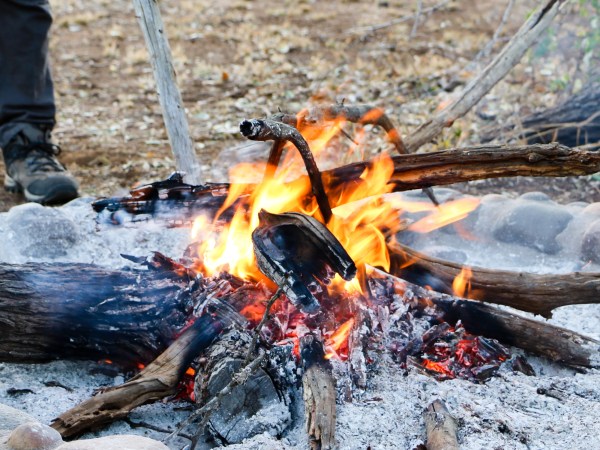

For years, national park visitation numbers have been on a steady incline as folks from all walks of life discover the mental and physical benefits of spending time outside. Unfortunately, more people means more congestion on trails, and crowds make peace and quiet in the woods nearly impossible to come by.
But overcrowding doesn’t just dampen the outdoor experience; all those bodies crammed into a finite amount of space can also wreak havoc on the pristine landscapes and natural ecosystems of our irreplaceable public lands.
Fortunately, there are ways to get outdoors—yes, even to our nation’s most-visited parks—and not only avoid crowds, but reduce your impact on the lands we love to love.
Crowding by the numbers
In fact, we may be loving them too much. National parks are usually stunningly wild destinations overflowing with sweeping vistas, diverse wildlife, and ample recreation opportunities. Adventurous travelers are catching wind. They aren’t, however, visiting all national parks equally. According to the National Park Service, 25 percent of all recreational visits in 2020 occurred in only six parks, which represent just 1.5 percent of all parks in the system.
Overall, visitation numbers jumped from slightly less than 279 million in 2011 to more than 327 million in 2019. The year 2020 saw an overall decrease in visitors, but 15 parks still flipped the script and set new visitation records. The most visited national park by far was Great Smoky Mountains at 12.1 million.
Managing those multitudes means the trails and campsites in some parks occasionally require reservations or close outright to curb the number of visitors. Many other parks struggle with overflowing vehicle lots, cars parked atop delicate roadside flora, and excessive litter.
[Related: We trained crows to pick up garbage, but can we teach ourselves?]
Gateway communities to these natural spaces know these problems first hand. Jackson County, North Carolina, just outside of Great Smoky Mountains, is one of them. There, Caleb Sullivan of the Jackson County Tourism Development Authority (and local Cub Scout den leader) spends a fair amount of time educating visitors on how to not only avoid lines of fellow hikers and full parking lots, but be kinder to the land, too.
Why crowding matters
Inconvenience of congested trails aside, the truth is that the more people there are in a given space, the more damaging the cumulative effect of their presence. That includes trail erosion, litter, cut-through trails made by people in search of shortcuts or new vistas, and even visitors endangering themselves and wildlife by getting too close. All of these actions can create eyesores, attract animals, pollute waterways, and even devastate whole ecosystems.
Then there are the less obvious ways visitors affect nature, like stacking rocks. Many do it as an exercise in serenity or a fun family activity, but these stacks, also known as cairns, are more harmful than helpful. For starters, rangers occasionally use cairns to mark paths on rocky trails, so extra stacks can lead hikers astray. But in some areas, moving and stacking rocks can actually endanger wildlife. The Smokies, home to the endangered hellbender salamander, are a perfect example: Hellbenders often lay their eggs under rocks, so when visitors move stones, it can jeopardize the salamanders’ entire population.
Other wildlife pay the price, too. In the Smokies, if an animal like an elk gets too comfortable around humans and there’s documented interaction between the species, the animal may have to be euthanized. Additionally, food, including orange peels and trail mix, should always be properly discarded for the health of animals; feeding wildlife by accident or on purpose can make them too dependent on or too willing to approach humans.
And Sullivan has seen an uptick in the frequency of all of this since the pandemic began, as an influx of people new to the outdoors (and unfamiliar with outdoor etiquette) are swapping indoor activities for fresh air and natural social distancing.
How to avoid crowds while hiking
Fortunately, many of these impacts are avoidable, says Ben Lawhon, senior director of research and consulting at the Leave No Trace Center for Outdoor Ethics. And the best thing any visitor can do is follow the seven principles of Leave No Trace:
- Plan ahead and prepare
- Travel and camp on durable surfaces
- Dispose of waste properly
- Leave what you find
- Minimize campfire impacts
- Respect wildlife
- Be considerate of others
Jackson County and North Carolina as a whole are both Leave No Trace partners, and Sullivan has been trained to help educate visitors on the best ways to preserve outdoor spaces for future travelers. He has even more tips for getting away from crowds.
For starters, go to parks and public lands during the week instead of on weekends. “Fewer people on the trail means less impact to natural areas,” he says.
[Related: Ultralight backpacking hacks no one tells you about]
Then, consider visiting during a park’s off season. That’s January through March in Jackson County, but off-peak seasons vary from place to place. Next, be flexible and select trails and areas—even whole parks (national forests and state parks don’t often get as much love as national parks)—that aren’t on any “best of” lists. Ask rangers or check local websites for recommendations for less popular trails or hidden gems, and you may not only have the trail to yourself, but you’ll help reduce the impact on more well-traveled paths.
“When you have fewer people on the trail, you have fewer people going off the trail to yield to other hikers,” Sullivan explains, adding that this seemingly polite action can cause trail erosion and trampled plants. “If the demand is spread out, hopefully the impact is spread out as well.”
Take time to learn about the destination before visiting, too. Due to COVID-19 restrictions, this step may be more important than ever before. Some locations now require reservations or have timed-entry systems, and some don’t have open or stocked restroom facilities. Other locations limit parking daily, Lawhon explains. “The more you know before you leave home, the better experience you’ll have and the easier your trip will be on the environment,” he adds.
Finally, adhere to the outdoorists’ motto: leave it better than you found it. That means come prepared to pick up a piece of trash or two during your outing. Or go all-out: bring a trash bag and gloves, collect litter as you explore, snap a photo, share it to social media with #TrashTag, and then dispose of the garbage properly once you’re back in civilization.
“There are more and more of us trying to enjoy a finite amount of space,” says Lawhon. “Given that reality, it falls on everyone to minimize their impacts.”
And don’t forget to have fun, Sullivan says. “Get out there and spread the love a little bit.”















